Panama national dress & traditional clothing
Panama national dress the pollerra is arguably the most beautiful in the world.

Panama national dress the pollerra is arguably the most beautiful in the world.

These beautiful Panamanian ladies are the check-out assistants from the Volcan branch of Romero. Pictured in November 2014 in traditional panama national costume.
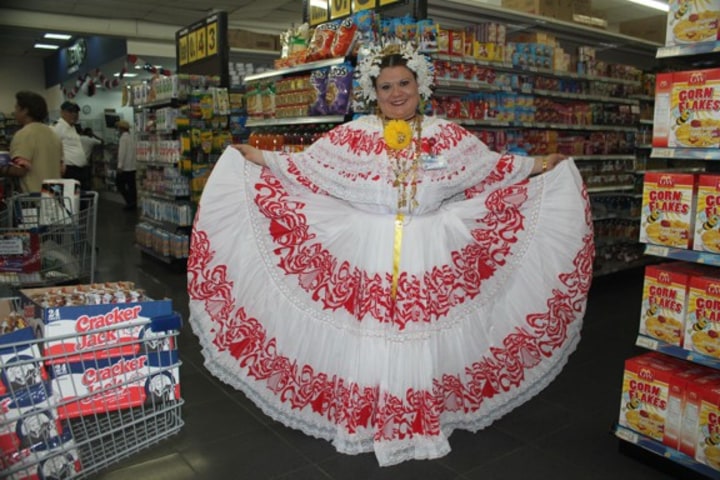
Between the Cornflakes and the cracker Jack this is a typical red and white pollera.
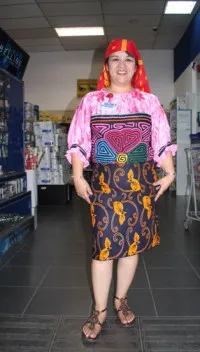
The Romero resident pharmacist proudly dons the traditional clothing of the indigenous tribes hailing from the picturesque Guna Yala region on the Caribbean coast.
This attire is more than just fabric; it’s a living testament to the enduring legacy and identity of a people deeply connected to their ancestral roots.
Her attire creates a stunning visual tapestry that celebrates the cultural richness of the Guna Yala indigenous attire.
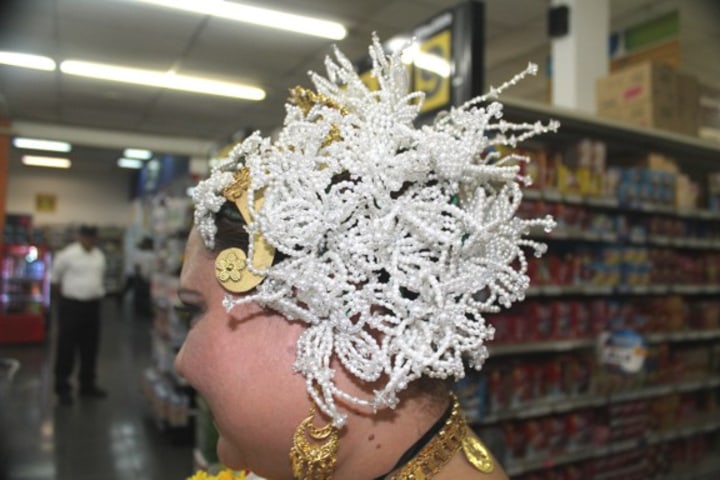
The hair adornments called “tembleque” are as important as the costumes themselves - this is a traditional white pearl arrangement.
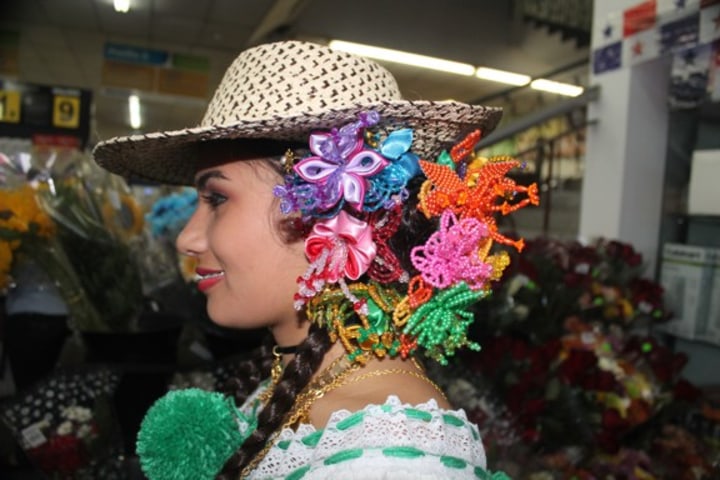
A more colourful variation of the tembleque - this topped off with a very traditional Panamanian straw hat.
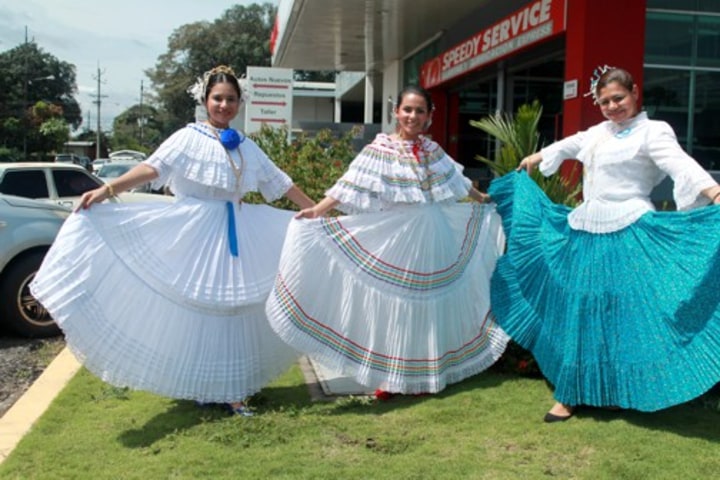
These three charming ladies were in front of David city’s, Toyota dealer.
Happily they agreed to have their photos taken. Again I will state that Panama’s national dress; the Pollera, is the most elegant, beautiful and stylish, national costume in the world.
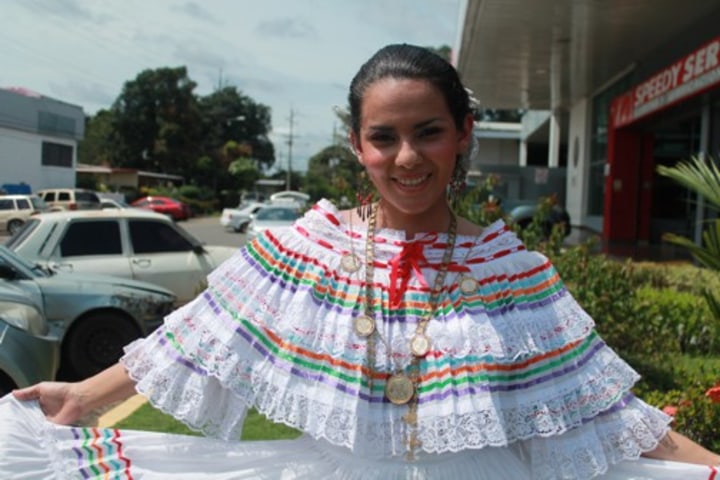
Below are examples of wedding Pollera as well as traditional panama female and male costumes. This style of dress has been in Panama since at least 1815. Some historians believe it is an adaption of the simple white dress worn by the “slave” nannies of the early colonial families.
The head decoration is almost as important as the dress itself. The hair is parted into two braids and tightly pulled back behind the ears. The ornamentation comes in several forms and they are called “tembleques.” These sparkle in the light with fan like sprays of flower filigrees. In the more authentic arrangements theses would be made of gold, silver, and pearls and originally of sea shells or coral.
Two types of combs are used. One is crested with elaborate gold work, called “de balcon” as it resembles the railings found on the balconies of colonial style homes.
There can be as many as twenty combs on the head -ten per side.The pearl encrusted comb is not surprisingly called “de perlas”. Ear rings of various shapes are worn in silver, gold and sometimes with with rosettes of pearls or coral.

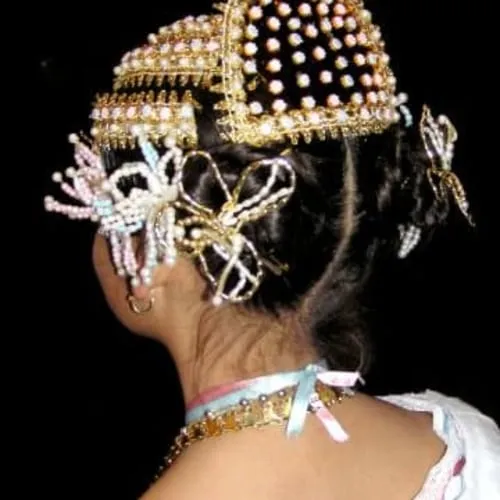
There are basically three types of pollera. The formal highly decorated version: “pollera de gala.” Then there is the everyday type the: pollera montuna and finally there is the wedding pollera.
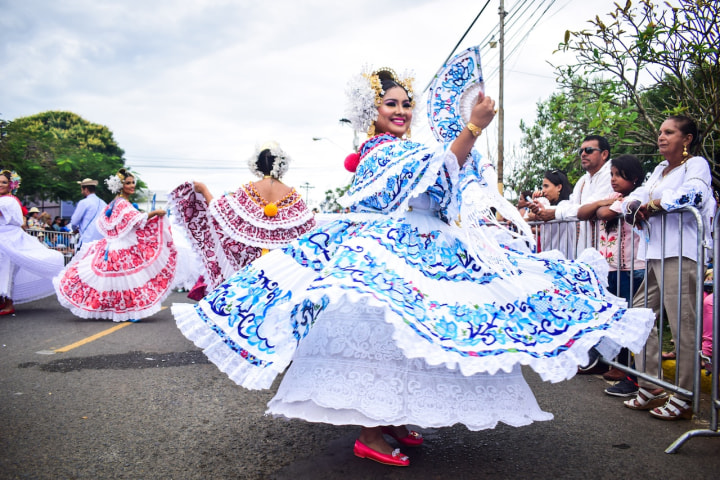
These dresses are worn everyday by the indigenous groups of western Panama, principally the Ngobe Bugle people. The highlands of Chiriqui province are much cooler than the low lands with temps. ranging from a low of 60F to a high of 75F, so the long dresses are better suited. All are handmade in rustic settings on manually operated “Singer” style sewing machines.
Again they reflect the Panamanian desire to make simple forms of attire as beautiful and ornate as possible. These dresses are called “enaguas.”